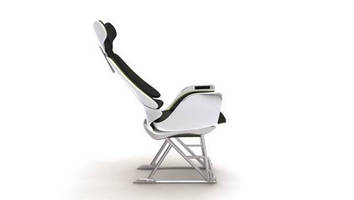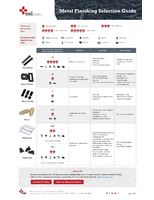SABIC Announces Global Application Development Focus to Advance Additive Manufacturing Technology

Orlando, Florida
Leveraging its global technology centers in the Americas, Europe, Asia and Saudi Arabia, SABIC announced that it is expanding the company's application development focus in additive manufacturing technology. The move further underscores SABIC's commitment to this evolving technology that is pushing the industry to rapidly develop new materials and processes that can help to achieve improved performance, complex designs, enhanced aesthetics and more economical part builds. SABIC's capabilities and experience in additive manufacturing across a number of industries will enable it to work closely with technology innovators including universities, research laboratories, printer manufacturers, OEMs and emerging technology companies to help accelerate the advancements necessary for additive manufacturing to reach its full potential.Â
"The insights and technology developments coming from SABIC will deepen the understanding of the critical link between materials, design, processing and part performance needed to expand the technology from functional prototyping to real-world part production," said Ernesto Occhiello, executive vice president, Technology Innovation at SABIC.Â
"Continuing to invest in capabilities and equipment to support the development of high performance materials for existing additive manufacturing processes as well as new, emerging technologies is a key enabler of SABIC's strategy to help our customers address their constant challenge of lowering the cost to innovate and bring their designs to market more quickly."
SABIC's success with additive manufacturing has been driven in large part by the company's holistic approach to this technology. From a broad portfolio of high performance materials, to design and processing expertise, to state-of-the-art equipment, SABIC provides a highly supportive research environment for material optimization, testing and designing for additive manufacturing processes. SABIC's investment in several industrial and desktop printers, including the Big Area Additive Manufacturing (BAAM) printer used to print the world's first 3D-printed car, will help to facilitate process improvements in fused deposition modeling (FDM®) and other extrusion-based printing processes.
Proven capabilities from prototyping to improved materials, processes and design using additive manufacturing Utilizing state-of-the-art thermoplastics rocessing technologies as part of the application development process has always been a significant means for SABIC to help solve its customers' toughest problems. Part teardown, concept creation, mechanical design, CAE analysis, material evaluation, part performance simulation, testing and advanced processing techniques are capabilities already in use at SABIC's technology centers to serve multiple industries. In a recent project to search for innovation and efficiencies in luminaire design and production, SABIC used predictive engineering and 3D printing technology to create an integrated thermoplastic LED luminaire, highlighting the opportunity to reduce the number of parts by 84%, the total weight by 24% and assembly time by 65%, compared to a conventional metal luminaire. SABIC was the enabler to help transform an insightful idea into a potential cost competitive solution for the fast growing LED industry.
While at NPE2015, SABIC will be offering a technical seminar focused on the potential of additive manufacturing technologies for the injection molding industry and the new space it provides for innovative thinking in plastic application development and the related tooling. The seminar will demonstrate how 3D printed metal tools for cavities and cores with conformal cooling designs have been utilized to achieve better efficiencies and improved cycle times. Additionally, SABIC will be giving two presentations at the NPE3D conference track of the SPI Business of Plastics Conference.
SABIC offers a range of materials for use in additive manufacturing today including:
•Â        ULTEM™ 9085 resin most commonly used for aerospace applications. On display in SABIC's booth will be a 3D-printed economy class aircraft seat created as inspiration for future seat design and manufacturing methods.
•Â Â Â Â Â Â Â Â LNP™ THERMOCOMP™ compounds – a carbon fiber reinforced material most recently used in the printing of Local Motors' Strati vehicle which will be on display in SABIC's booth.
•Â Â Â Â Â Â Â Â CYCOLAC™ MG94 resin – an ABS material used by the maker community for fused filament fabrication (FFF) printing.
The Big Area Additive Manufacturing (BAAM) printer from Cincinnati Inc. was used to print the world's first 3D-printed car – Local Motors' Strati. The industrial size and speed of the printer enable large parts to be printed quickly. The Strati was printed in 44 hours at IMTS in September 2014.
SABIC's LNP™ THERMOCOMP™ carbon fiber reinforced compound was chosen for the world's first 3D-printed vehicle, Local Motors' Strati, at IMTS 2014 for its excellent strength-to-weight ratio and high stiffness which minimizes warping during the 3D printing process, enabling enhanced aesthetics and performance.
3D Printed Economy Class Aircraft Seat Prototype
To inspire aircraft industry seating tiers to take a fresh look at seat design and fabrication, SABIC licensed a Studio Gavari design for a sleek and ergonomically advanced seat. The seat was printed by Stratasys, using SABIC's ULTEM™ 9085 resin, which is highly compatible with 3D printing and meets aircraft industry and OEM-specific heat release and flame, smoke and toxicity requirements. The use of 3D printing enabled the rapid prototyping of the Studio Gavari design without the expense of tooling, resulting in an economy class seat with less than 15 components, demonstrating the potential for part consolidation and manufacturing efficiency.Â
•Â Â Â Â Â Â Â Â SABIC and brands marked with ™ are trademarks of SABIC or its subsidiaries or affiliates.
•Â Â Â Â Â Â Â Â High-resolution photos are available upon request
•Â Â Â Â Â Â Â Â SABIC should be written in every instance in all uppercase
® FDM is a registered trademark of Stratasys, Ltd.
ABOUT SABIC
Saudi Basic Industries Corporation (SABIC) ranks as the world's second largest diversified chemical company. The company is among the world's market leaders in the production of polyethylene, polypropylene and other advanced thermoplastics, glycols, methanol and fertilizers.
SABIC recorded a net profit of SR 23.3 billion (US$ 6.2 billion) in 2014. Sales revenues for 2014 totaled SR 188.1 billion (US$ 50.2 billion). Total assets stood at SR 340 billion (US$ 90.7 billion) at the end of 2014.
SABIC's businesses are grouped into Chemicals, Polymers, Performance Chemicals, Fertilizers, Metals and Innovative Plastics. SABIC has significant research resources with 19 dedicated Technology Innovation facilities in Saudi Arabia, the USA, the Netherlands, Spain, Japan, India, China and South Korea. The company operates in more than 45 countries across the world with around 40,000 employees worldwide.
SABIC manufactures on a global scale in Saudi Arabia, the Americas, Europe and Asia Pacific.
Headquartered in Riyadh, SABIC was founded in 1976 when the Saudi Arabian Government decided to use the hydrocarbon gases associated with its oil production as the principal feedstock for production of chemicals, polymers and fertilizers. The Saudi Arabian Government owns 70 percent of SABIC shares with the remaining 30 percent held by private investors in Saudi Arabia and other Gulf Cooperation Council countries.
SABIC Media Contacts
Deborah Kelley
E: media.inquiries@sabic-ip.com
T: +1 413-448-6706




